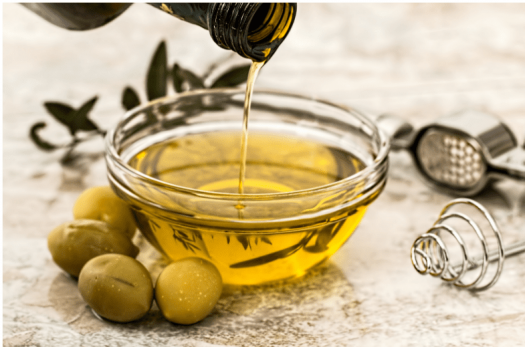by Sarah Pittman, B.S., Dietetics student
Although oils are NOT a food group they still play a very important part in a healthy diet because of the essential nutrients they provide.3 Many people ask, what is the BEST oil to use? Well, that is not such an easy question to answer. There are many benefits and uses to the wide range of oils on the market today. Lets break it down. (Nutrition based on 1 tbsp of each).
Canola Oil
- Saturated fats: low (1 g)
- Mono and polyunsaturated fats: high with omega 3 fatty acids
- Monounsat Fat: 8g
- Polyunsat Fat: 4 g
- Smoke point: high
- Ideal for cooking: sautéing, stir frying and preventing food from sticking to pans
Flaxseed Oil
- Saturated fats: low (1.2 g)
- Mono and polyunsaturated fats: high with omega 6 and omega 9 essential fatty acids
- Monounsat Fat: 9.2 g
- Polyunsat Fat: 2.5 g
- Smoke point: low
- Not ideal for cooking: better for salad dressings and as a topping
Avocado Oil
- Saturated fats: low (2 g)
- Mono and polyunsaturated fats: high; 70% monounsaturated fat
- Monounsat Fat: 10 g
- Polyunsat Fat: 2 g
- Smoke point: high
- Ideal for cooking: sautéing, frying foods, but also good for toppings and salad dressings
Coconut Oil
- Saturated fats: HIGH (13 g)
- Mono and polyunsaturated fats: low
- Monounsat Fat: 1 g
- Polyunsat Fat: 0 g
- Smoke point: low
- Not suitable for high-temperature cooking
Sesame Oil
- Saturated fats: low (2 g)
- Mono and polyunsaturated fats: high
- Monounsat Fat: 7 g
- Polyunsat Fat: 6 g
- Smoke point: high
- Great for stir frying and sautéing, also good as a topping over an Asian slaw
Vegetable Oil
- Saturated fats: low (1.5 g)
- Mono and polyunsaturated fats: high, rich in both mono and polyunsaturated fats
- Monounsat Fat: 5 g
- Polyunsat Fat: 6 g
- Smoke point: high
- All purpose oil is best for baking and sautéing
Olive Oil
- Saturated fats: low (2 g)
- Mono and polyunsaturated fats: high in monounsaturated fats
- Monounsat Fat: 10 g
- Polyunsat Fat: 1 g
- Smoke point: high
- Can use in dressings, dips, sautéing, and frying2
Nutritionally you should look for oils that are low in saturated fats and high in mono and polyunsaturated fats. Saturated fats are solid at room temperature, including butter, red meat, whole milk cheese, and coconut oil. A diet high in saturated fat tends to raise the “bad” LDL cholesterol, which can cause blockages in your arteries.1 Foods that are high in mono and polyunsaturated fats include, olive oil, canola oil, avocados, nuts, salmon, and mackerel. A diet high in mono and polyunsaturated fats can help reduce the harmful LDL cholesterol and lowers triglycerides.1 These healthy fats can also treat heart disease and stroke. As far as calories go, oils tend to be similar as 1 tbsp of oil is about 120 calories.
What oils do you like to use in cooking, salad dressings, and toppings?
References:
- https://www.health.harvard.edu/staying-healthy/the-truth-ahttps://www.health.harvard.edu/staying-healthy/the-truth-about-fats-bad-and-goodbout-fats-bad-and-good. Published 2019. Accessed April 25, 2019.
- Moore M. All About Oils – Food & Nutrition Magazine. Food & Nutrition Magazine. https://foodandnutrition.org/january-february-2014/all-about-oils/. Published 2019. Accessed April 25, 2019.
- Nutrients and health benefits. Choose MyPlate. https://www.choosemyplate.gov/oils-nutrients-health. Published 2019. Accessed April 25, 2019.
Photo by: Canva















